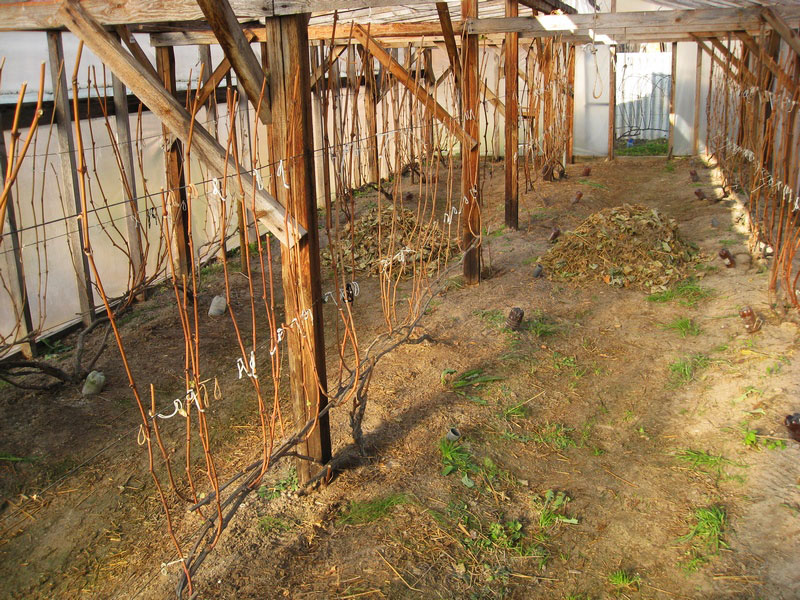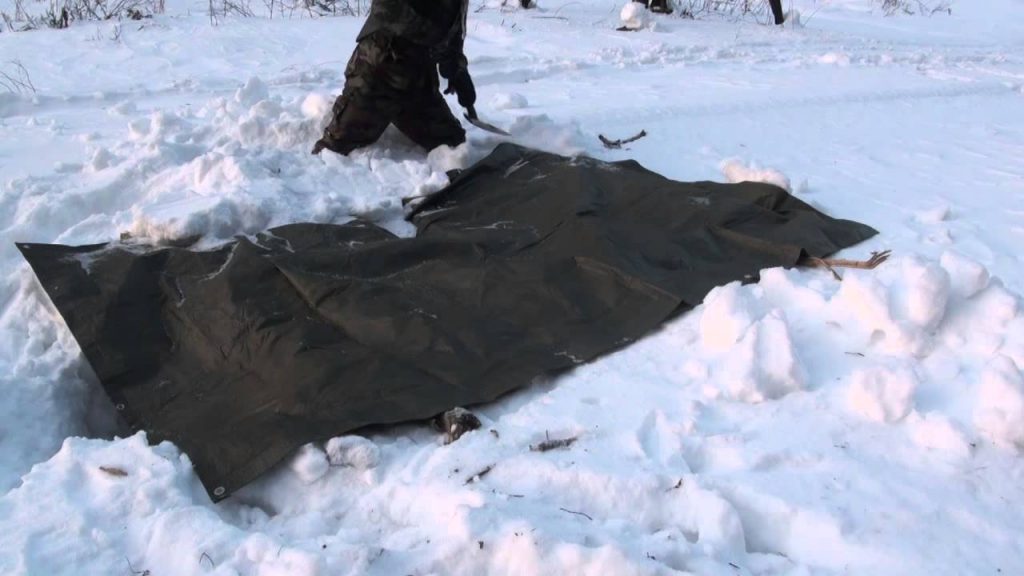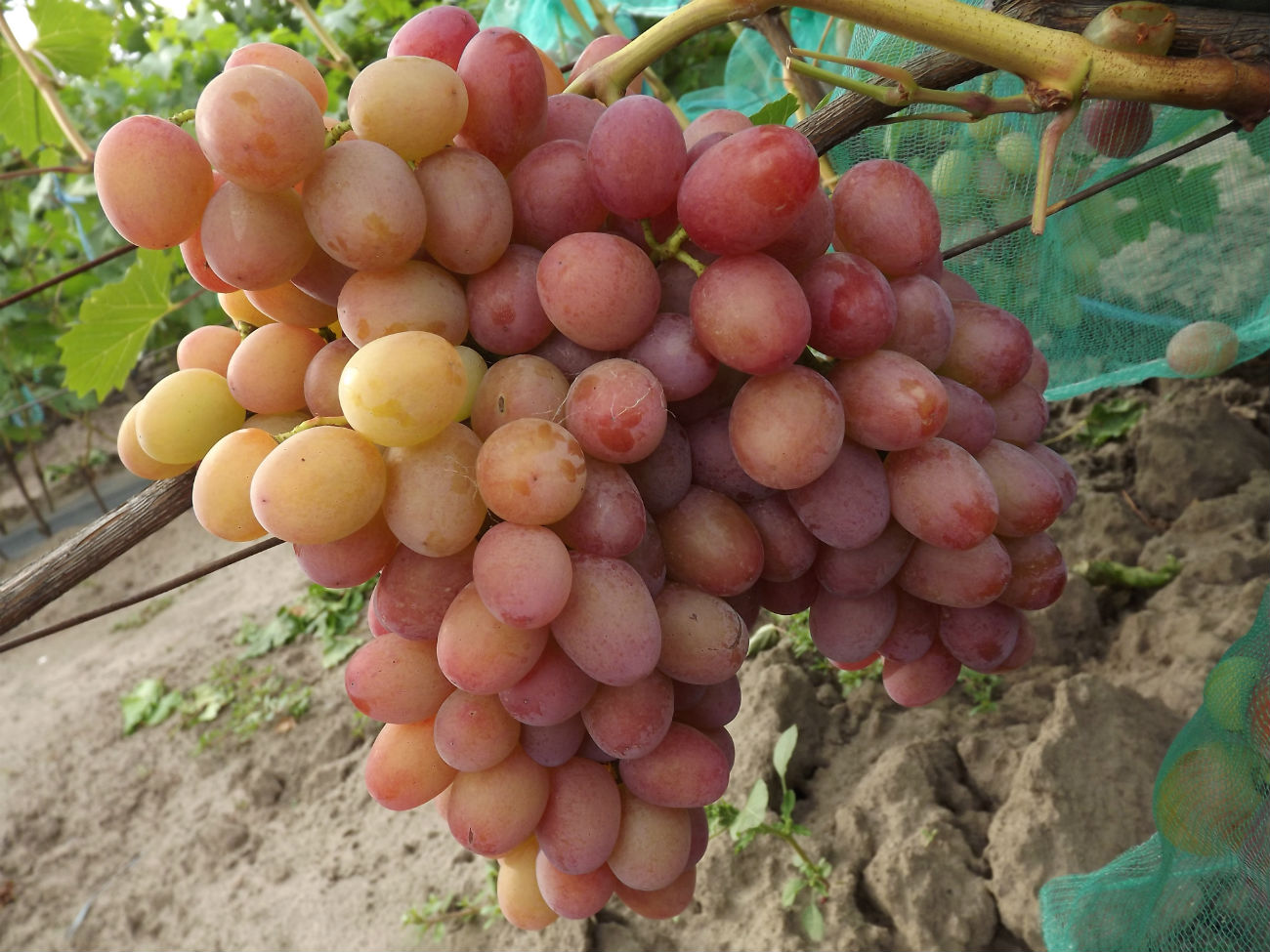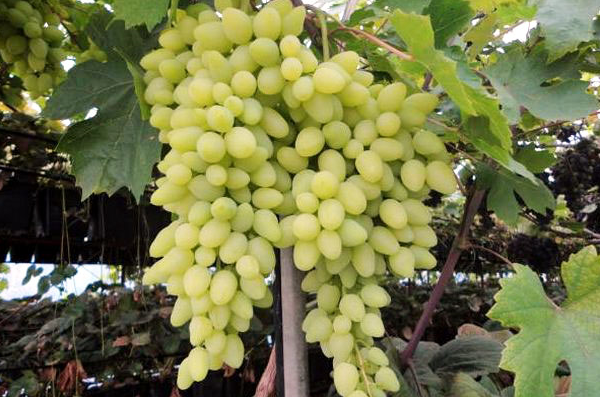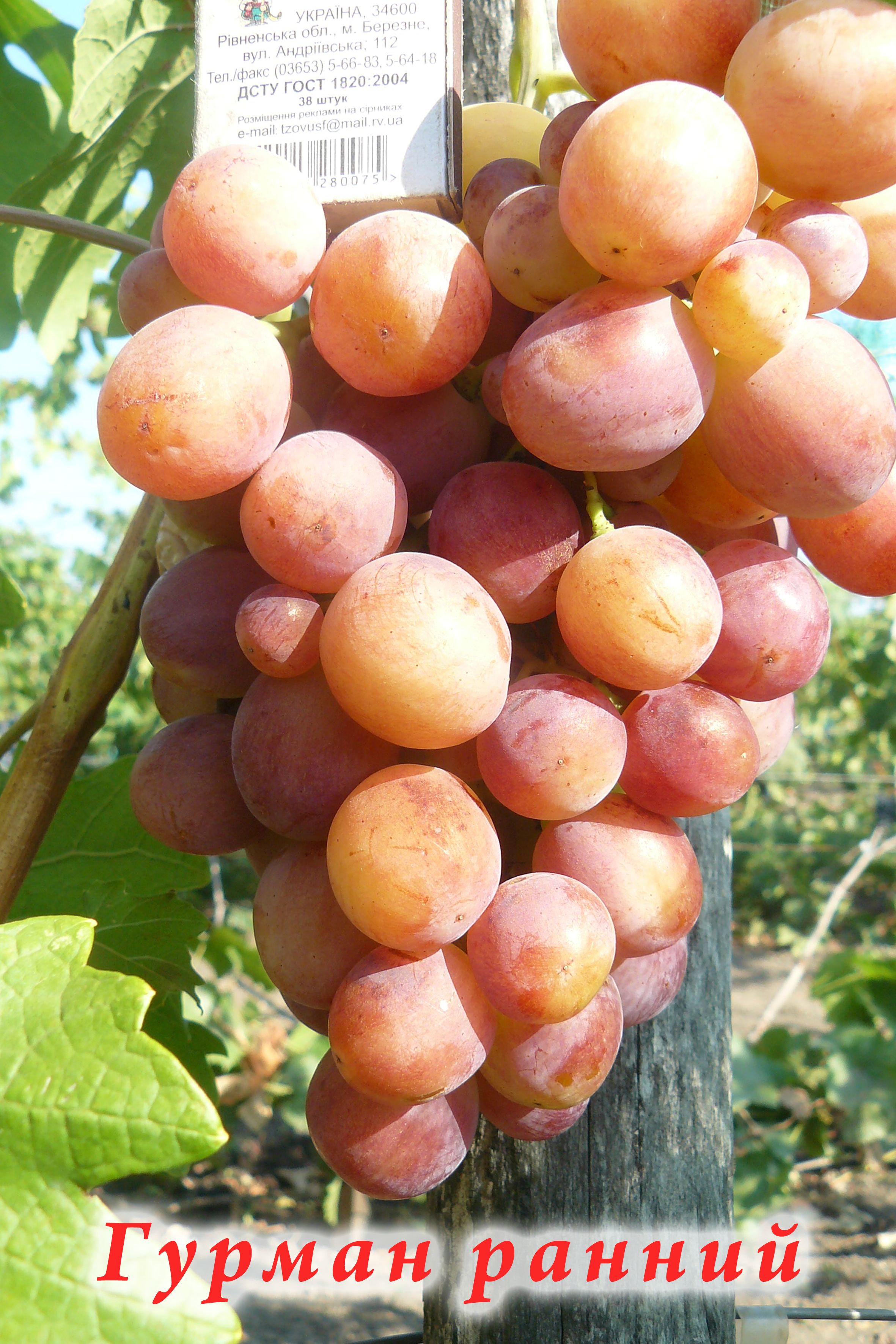Content:
In order for the shoots of one-year and two-year-old grapes to overwinter, they must be properly covered. Novice gardeners are concerned about how to cover grapes for the winter and in what time frame. Let's figure it out.
Recommended timing
Shelter terms depend on the growing region. In central Russia, grapes are dormant for about 6 months, in the southern regions, such as in Rostov, this period is shorter.
Covering too early will prevent the shoot from receiving additional nutrients. And if it's too late, it can freeze. The first frosts serve as a guide to the beginning of shelter. As soon as the temperature drops below 0 in autumn, it's time to cover the vineyard.
There are grape varieties that can withstand temperatures down to -25 degrees, in the southern regions they are stopped without shelter. But in the first two years of life, all grapes require shelter. In the southern regions, they are sheltered at the end of October, and in the northern ones, 1-1.5 months earlier.
Shelter timing, depending on the regions
On the main territory of the Russian Federation, growing grapes and sheltering for the winter are two activities that are impossible without the other. But in each region, the timing of the shelter is different:
- Preparing grapes for wintering in the middle lane and the Moscow region - usually this period falls at the end of December. The plant experiences the first subzero temperatures uncovered, it is necessary for hardening and ripening. Only when the thermometer is lowered to the -5 mark is it covered.
- In the Urals, there are many difficulties in growing. In mid-November, the soil already freezes and does not thaw anymore, this is the best time for shelter. In spring, there is a high probability of recurrent frosts, therefore, so that the shoots do not get wet, they are laid on boards or a trellis. When to open grapes after wintering in the Urals? The main criteria by which the period for removing the covering material is determined are the complete melting of the snow cover, the establishment of a stable temperature of at least -5 degrees and the drying of the upper layer.
- Only winter-hardy varieties can be grown in Siberia. In this case, a trench is the best cover. It is prepared in September. A layer of mulch is laid in the trenches, then grapes are placed and the top should be covered with a wooden canopy, on which then a large layer of snow should be thrown.
Grape shelter recommendations
Experienced growers have developed a specific scheme for sheltering the grapes. The main task that is solved during the shelter is to protect the roots from frost.
Preparatory activities
Before the shelter, a number of preparations are carried out:
- All fruits must be harvested 30 days before the expected date of shelter.
- The next step is pruning.
- The vine is removed from the trellis, twisted and tied up.
- Cuttings are susceptible to fungal diseases and microbial infections. Accordingly, they require special treatment. Most often, they are treated with copper sulfate.
- Abundant watering is practiced 5 days before the shelter. One bush will require about 2 buckets of water. When evaporated, the water will warm the roots.
The main methods of shelter
How to shelter grapes for the winter? There are several basic hiding places. Here are the main ones:
- Shelter with snow;
- Shelter with spruce branches;
- Shelter by the ground;
- Shelter with tires;
- Mini greenhouses;
- Wooden boxes.
Let's take a closer look.
Shelter in snow
In snowy regions this is the most common method, snow is the best protection. For this, the prepared vine is covered with snow. The height of the snow cover is over 35 cm.
Shelter with spruce branches
For this, the vine is twisted around the trunk, fixed and covered with spruce branches from above. The height of the protective cover is 35 cm and more. If forecasters predict severe frosts in winter, the coating is insulated. To do this, a layer of snow is piled on the branches, then again you will have to cover with spruce branches to insulate.
Shelter by the ground
You can use the ground for insulation. For this, the plants are spud. Earthen ramparts are made around the bushes. For young plants, the height of the shaft is 30 cm, for mature plants - 50 cm. The soil must be dry. It is even better if it is mixed with sawdust. Before hilling, watering is carried out, up to two buckets of water are poured onto 1 plant. Top covered with old slate.
Shelter by tires
There are old tires in the garden: it is a pity to throw it away, and they can no longer be used for their intended purpose. Then they can be used in viticulture. The scheme is simple: 1 tire is dug into the ground, the twisted vine is placed inside the tire, a second tire is placed on top, and soil is sprinkled on top. For the successful preservation of grapes, holes must be made in the tires to provide air access.
Mini greenhouse
In the Moscow region and central Russia, this method is practiced quite often. A shelter in the form of a mini greenhouse is created for the grapes. The vines bend down and make an arched shelter above them. For these purposes, use a different covering material: tarpaulin, roofing felt, old bags.
Wooden boxes
Will help protect young grapes and wooden houses. Covering is carried out a little earlier. Such a box is installed already at +8 degrees. From the inside, the house is covered with a film, this is done so that water does not penetrate inside. At the place of contact with the ground, the house is sprinkled with soil.
Partial cover
Cover grapes or not? Winter-hardy varieties do not need to be covered. The following activities are carried out with them. First they are prepared, as in front of a shelter. Then the plant is tied to a support with one bundle. Next, you need to wrap it up with insulation and fix it well. In this position (standing) the plant will winter.
With this method, the root system is separately insulated. The soil near the bush is dug up. Sawdust is poured on top and covered with spruce branches.
Whichever method is chosen, a prerequisite for a successful wintering, so that the water does not fall under the shelter.
